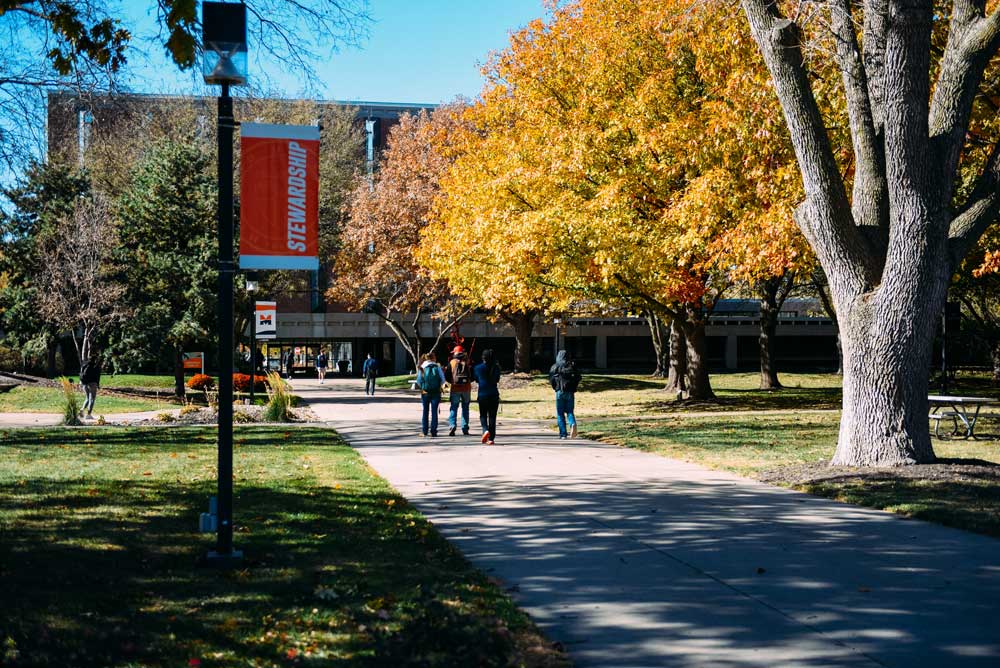The patients may not be real, but Midland University nursing students are gaining real-life experience through the Simulation Lab at Methodist Fremont Health.
Since its opening in 2018, the Simulation Lab has provided hands-on experiences for nursing students as they prepare to enter the nursing field. “It allows students to critically think in a safe environment,” said Dr. Deb Brester, Associate Professor, School of Nursing and Simulation Lab Coordinator. “If they are not sure what to do during a situation, they can learn from it, and the next time they encounter that situation, they will have a greater understanding and can do the right thing quicker than before.”
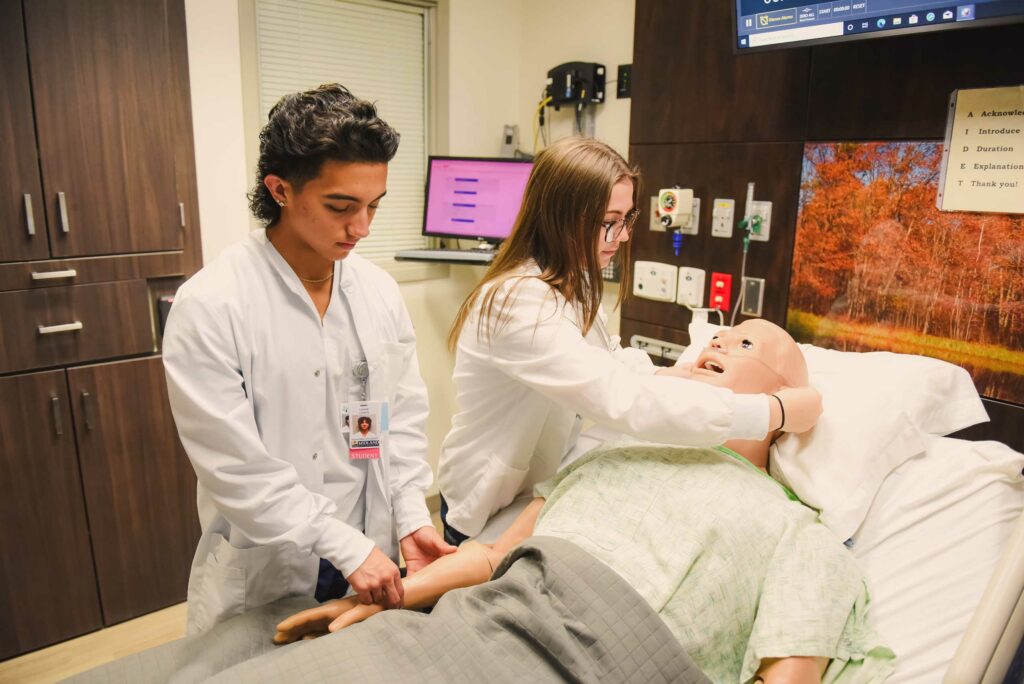
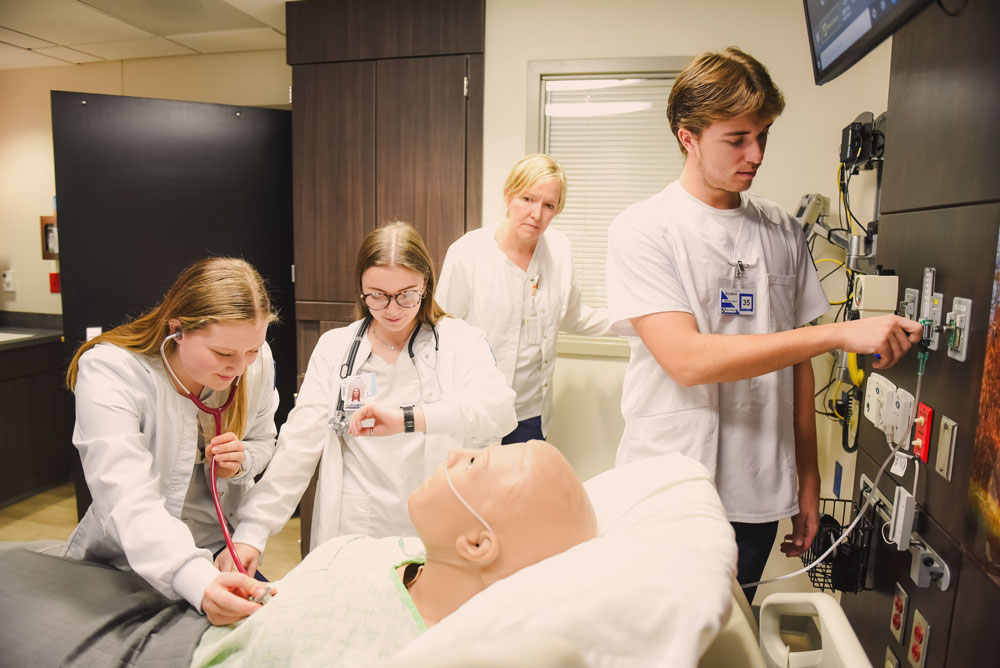
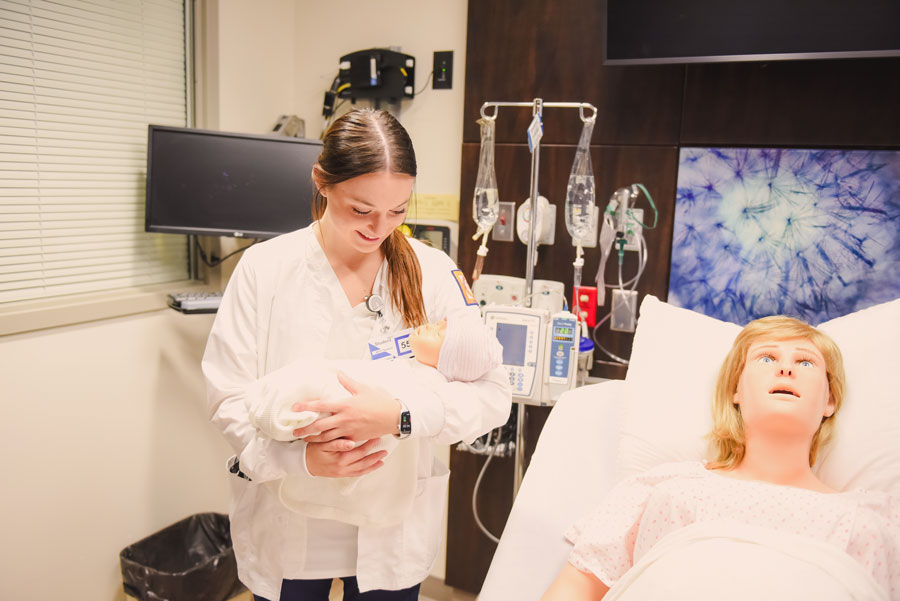
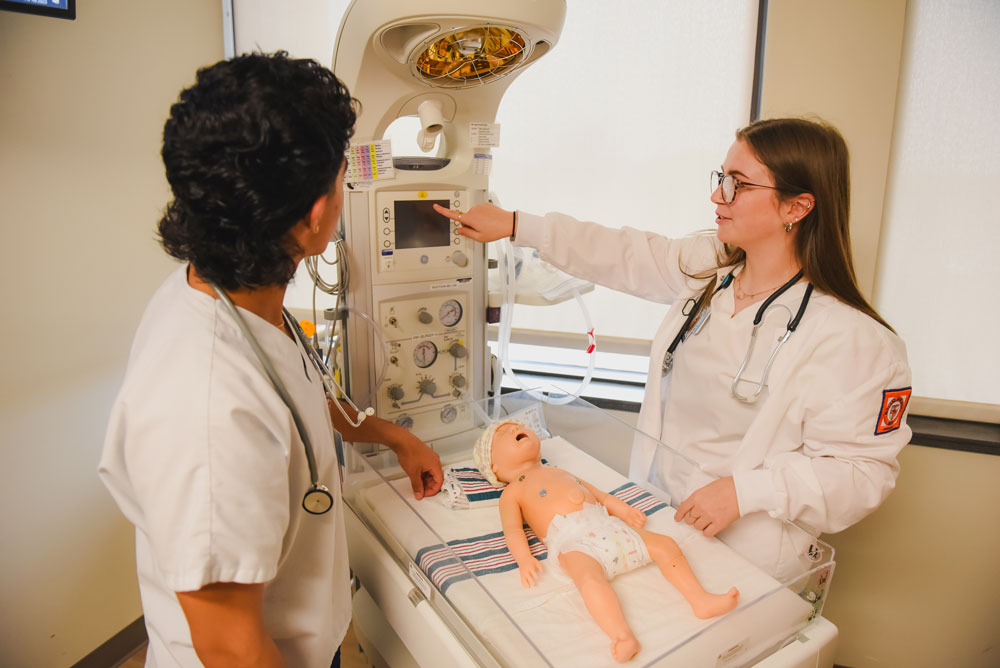
The sim lab utilizes four different rooms at Methodist Health Fremont. With the help of five Gaumard Manikins, the nursing faculty is able to simulate nearly every situation a nurse could potentially encounter. There are two adult manikins (male and female), a manikin that simulates childbirth, a preteen manikin, and a newborn. “We can simulate almost any situation, including things like seizures and postpartum hemorrhaging,” said Dr. Tesa Keeling, Dean, School of Nursing. “Our instructors are running the manikins and making the manikins do what could or should happen. They can interact with our students and change patient reactions.”
Prior to the simulation lab, Brester said students would be in one-on-one situations with real patients, which didn’t always allow them to address every situation that could arise and restricted their ability to practice some of these skills and be able to ask questions in real-time. “You could only have one student at a time, and you would be with them, but it was hard to do some of these things in front of real patients,” she said. “You wouldn’t see everything you wanted them to see. This is the closest these students will come to living those experiences.”
Nursing students begin spending time in the simulation lab their sophomore year, averaging between six and 20 hours per semester in the lab. Keeling said each student will focus on various specialty areas during their time in the lab.
“Some of these simulations they are doing are things I never got to do in nursing school,” Keeling said. “They are able to have dialogue and open conversations that you couldn’t have in a true patient setting. They can talk through situations with each other and have an instructor facilitate. So when they are encountered with a real patient, they have that knowledge.”
Kaylee Bergstrom, a junior nursing major, believes the experience and knowledge obtained through the sim lab are invaluable when preparing for real-life situations. “Being in the sim lab the past two years, we have been able to learn about different aspects of patient care and work with different types of patients, whether that be a mother or a patient going through surgery,” she said. “Learning how to treat different types of patients in different situations has been the most valuable information to me while working in the sim lab.”
While the sim lab is not a substitute for the nurse-patient relationship, it works to provide a supportive environment when nurses encounter a patient in a real-life situation. “It’s not meant to replace what we are doing in clinical settings, but it’s meant to enhance that experience,” Keeling said. “Our nurses will be more confident going into situations, know how to use more tools and assess the patient. When they do enter clinicals, they are ready to hit the ground running.”
Being exposed to many different scenarios is what gives nursing students a head start when they begin their careers. Chiara Richeson, a junior nursing major, believes the skills she is learning now will translate into her daily work as a nurse. “I have found the manikins are extremely accurate and allow me to know exactly what I am doing when it comes to real-life patients,” she said. “The sim lab allows us to go at our own pace and do the procedures as much as we need to feel comfortable. It allows us to work with our peers in a controlled environment, getting direct feedback from current nurses in the field.”
Working with the manikins entails more than just their physical well-being. The mankins are programmed to communicate with the students, and the students, in turn, work on informing the patients of their diagnosis, treatment, and putting them in a position of comfort. “It’s not just about the medical disorder or illness,” Brester said. “During our debriefing process with the students, we go over different ways they could have communicated with the patient or maybe a better way to answer their question. We work with them to gain the patient’s trust.”
While many colleges across the country offer students an opportunity to live out these situations through simulation, Midland affords students the unique opportunity of being in a true hospital setting. “Some schools have rooms built to look like a hospital, but ours truly is a hospital,” Brester said. “We have the same things you would have in a hospital setting, which allows us to simulate exactly how it would be.”
Although they will not enter sim lab training until their sophomore year, nurses hit the ground running at Midland during their freshman year. “We are so fortunate to have many opportunities for our students to get in a hands-on learning environment,” Keeling said. “As freshmen, they start out studying anatomy and physiology and learning what’s in the body and how everything works. Then, we start to hone into more specific areas with our lower fidelity manikins on campus, learning how to move limbs or how to reposition them. Once we build that, they start to go through the full simulations with the reactive manikins, as well as building the social aspect.”
Throughout their time at Midland, nursing students will have a variety of clinical experiences in which they will get a better understanding of the areas they might be interested in for preceptorships and, ultimately, a job in the nursing field. “We have a variety of clinical settings, and they will learn many different specialties,” Keeling said. “We get to find out what they’re most interested in, whether that’s an emergency room nurse, a labor and delivery nurse, or any other kind. They’re not going into a hospital and learning one kind of nursing; they’re going to get many community-based experiences.”
At the end of their senior year, nursing students will work on their preceptorship, where they spend 200 hours completing nursing skills in a healthcare setting under the direct supervision of a nurse.
A combination of people, resources, and knowledge is what Keeling believes makes Midland’s program one of the strongest around. “We are fortunate that many of our clinical partners we work with have a lot of Midland alumni on the staff,” Keeling said. “They know the work we do and the reputation of our program, and when I talk to those partners, what I hear is that our students are doing a phenomenal job in that clinical setting.
“We may have all the tools, but you also have to have a strong faculty leading the way, and that’s a huge part of our success. Our students feel supported by our faculty.”
